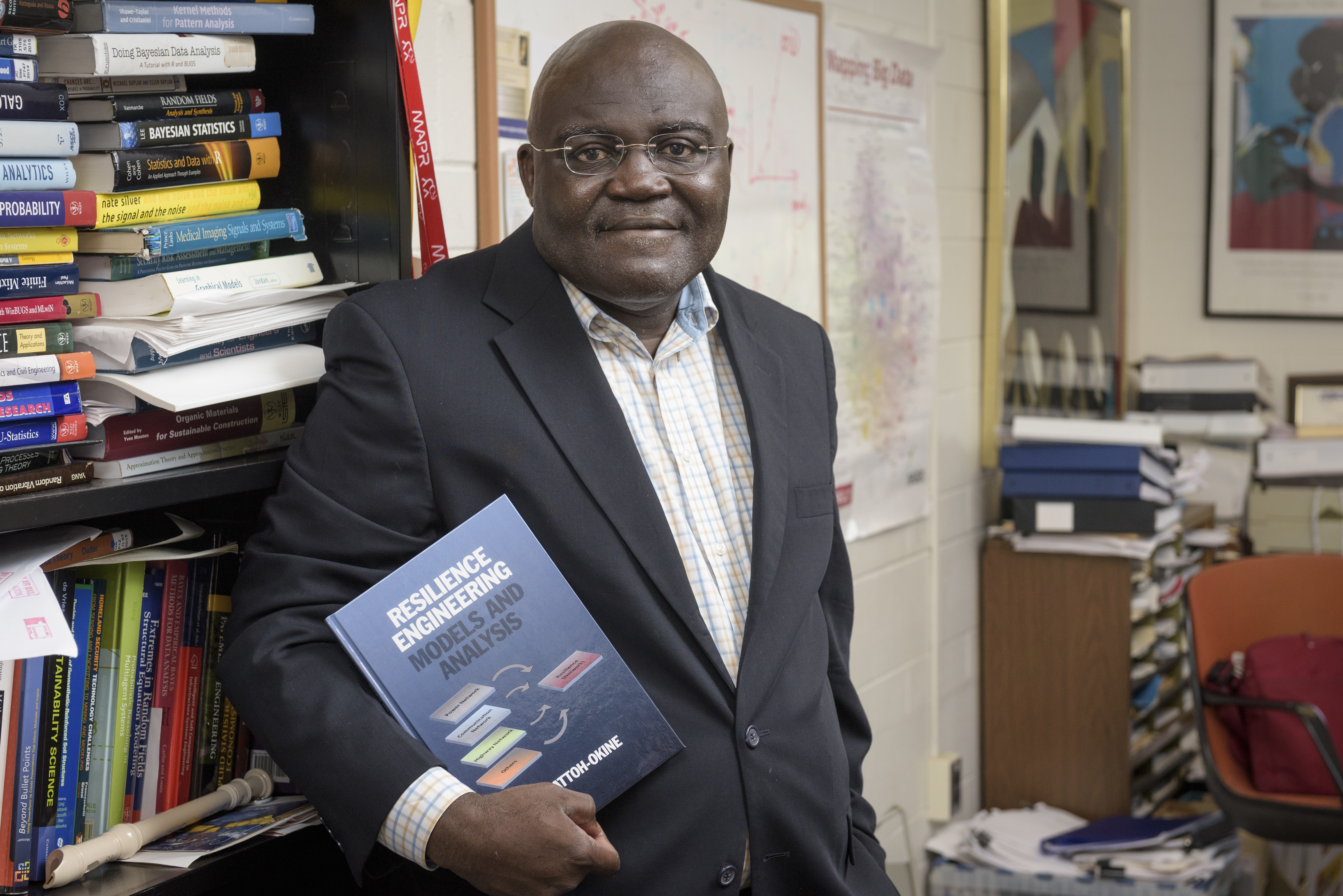
On the money
UD historian joins select group advising Treasury on new $10 bill
1:14 p.m., Sept. 8, 2015--It’s not every day that a historian is asked to join a select group of scholars from around the country to give advice to the U.S. Treasury secretary, but that’s what happened recently to the University of Delaware’s Arwen Mohun, who studies the social and cultural history of technology.
Mohun, professor and chairperson of the Department of History, spent a day at the Smithsonian Institution last month as part of a group that was invited to offer input on the question of a redesigned $10 bill. Treasury Secretary Jacob (Jack) Lew had already announced that a new bill to be issued in 2020 would, for the first time in more than a century, feature a woman’s portrait.
People Stories
'Resilience Engineering'
Reviresco June run
Since that announcement, public interest has run high, with advocates pressing for the honor to go to a wide range of prominent historical figures, including civil rights leaders, social reformers and the founder of the Girl Scouts of the USA.
After attending the meeting at the Smithsonian, Mohun suspects that the final choice will come down to two women — Eleanor Roosevelt or Harriet Tubman — although the decision will be made by Lew, who does not need any further approval to authorize a new bill.
In fact, the Treasury Department says in an informational website on the subject, public input has rarely been sought in previous currency redesigns.
In July, a Treasury official contacted Mohun to ask her to be part of a roundtable of thought leaders that would meet at the Smithsonian with Lew and other officials.
“I’ve had a relationship with the Smithsonian for 30 years, but the invitation really came out of the blue,” said Mohun, who has been a researcher at the institution and has former students who worked there. “I don’t know who recommended me, but it turned out to be a wonderful experience. There were great historians there, and the conversation was really fascinating.”
The 16 invited experts came from institutions and organizations including Harvard and Yale universities, the universities of California and Texas, the American Historical Association and the National Currency Foundation.
They gathered at a conference table, in a room guarded by the Secret Service, and spoke with Lew and U.S. Treasurer Rosa Rios, while Treasury Department staffers sat nearby and listened in on the discussion.
“What they wanted from us was to find out who we thought would be the best choice and why,” Mohun said. “There were social and cultural historians, currency historians and women’s historians. It was very interesting to hear how different people see this issue so differently.”
She said Lew told the group that there are few rules for currency design, but George Washington must appear on the $1 bill and no living person may be featured. Beyond that, the overarching concern is that currency must be as protected from counterfeiting as possible.
Security is also the key to deciding the order in which bills are redesigned, which is why the $10 note is the next in line for a makeover.
“I learned a lot about currency that I had never known before,” Mohun said. “As a historian, being part of this was quite an opportunity.”
Who should be featured?
Mohun went to the roundtable with a preference for selecting Harriet Tubman, the former slave who led many others to freedom via the Underground Railroad. An abolitionist, humanitarian and Civil War spy for the Union, Tubman would be the first African American ever pictured on U.S. currency, and Mohun said she thinks that would make an important statement.
“The U.S. currency is really a global currency” accepted virtually everywhere, she said. “Whoever is chosen to be on the bill will tell the world something about America’s values.”
In the discussion at the Smithsonian, Eleanor Roosevelt also emerged as a strong candidate. In addition to her long and politically active tenure as first lady, she was an outspoken advocate for human rights and was one of the first U.S. delegates to the United Nations, chairing its inaugural Commission on Human Rights.
The Treasury Department, which has already received more than a million comments from the public on the question of redesigning the bill, has urged “a public dialogue about how we can use the new $10 note to best represent the values of our inclusive democracy,” according to its website.
Other names that have been widely mentioned for the honor include:
- Jane Addams, a pioneer settlement social worker and founder of the Women’s International League for Peace and Freedom, received the 1931 Nobel Peace Prize.
- Susan B. Anthony, a social reformer and feminist, as well as an abolitionist, was a leader in the women’s suffrage movement.
- Helen Keller, an author, educator and activist who was deaf and blind, was a leading humanitarian and champion for people with disabilities.
- Juliette Gordon Low founded the Girl Scouts of the United States, welcoming members across class, cultural and ethnic boundaries.
- Rosa Parks, an anti-segregation activist whose civil disobedience launched the Montgomery bus boycott, is known as the mother of the U.S. civil rights movement.
- Sacagawea, a Shoshone woman, provided key help to the Lewis and Clark expedition, making contacts with Native Americans across thousands of miles.
Article by Ann Manser
Illustration by Jeff Chase








